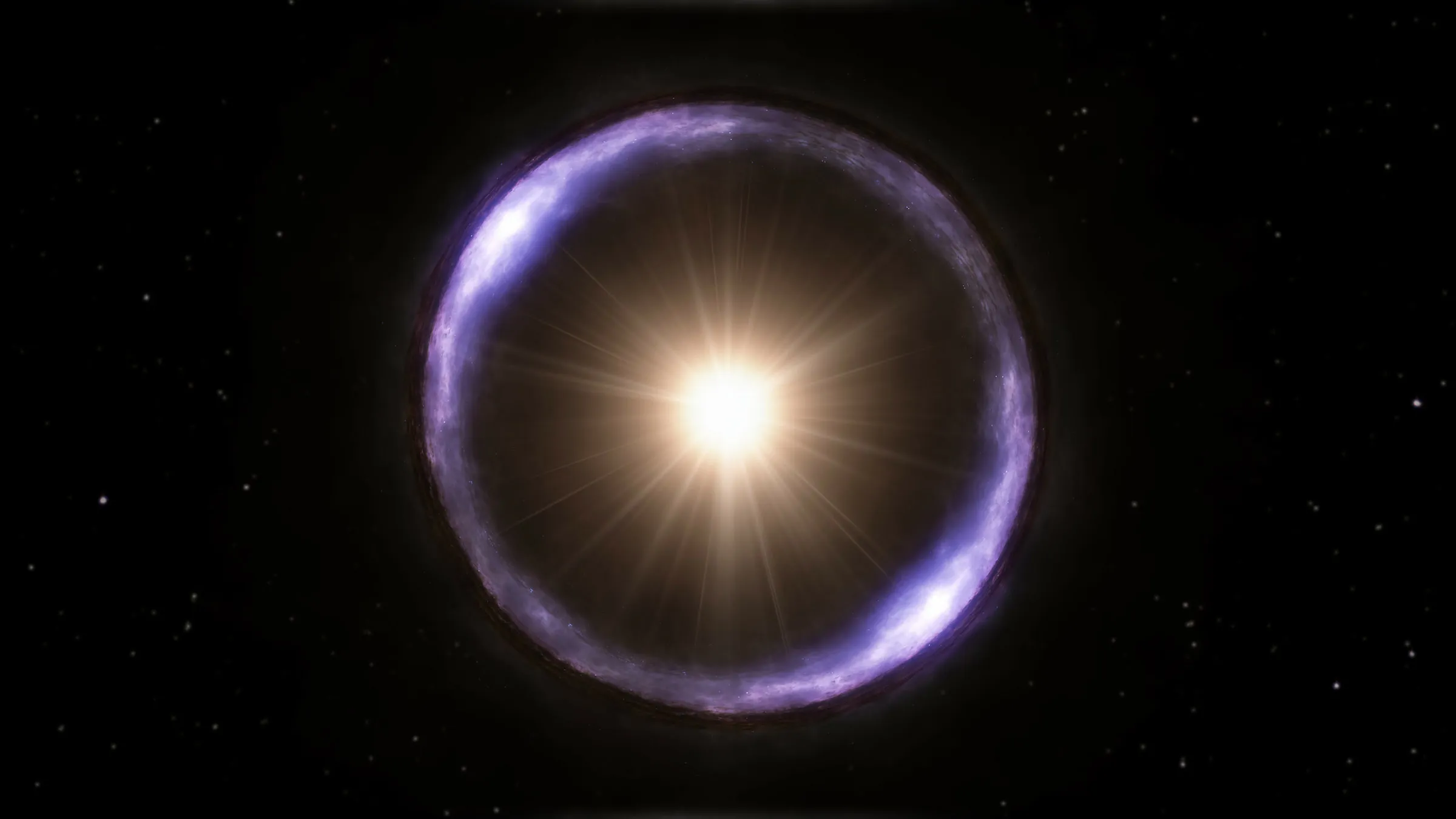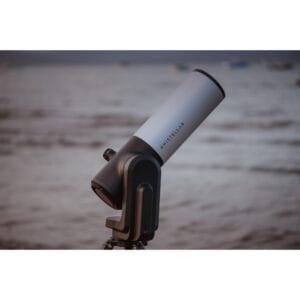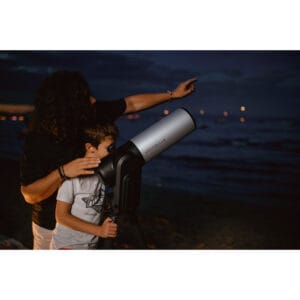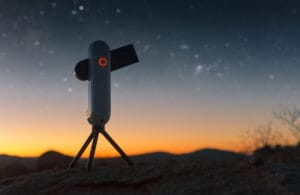Imagine: you look up at the starry sky and discover something extraordinary. Not an ordinary star or planet, but a perfect ring of light. This isn’t magic, but a remarkable physical phenomenon we call an Einstein ring. Recently, the Euclid space telescope captured a rare example of this near the galaxy NGC 6505. But what exactly is an Einstein ring, and why is this discovery so special? Let’s dive in.
What is an Einstein Ring?
An Einstein ring occurs when light from a distant star or galaxy is bent by the gravity of another, closer galaxy. This effect, which stems from Einstein’s general theory of relativity, causes the light to bend into a ring shape around the foreground object.
You can compare it to a magnifying glass. If you hold a magnifying glass in exactly the right way, you’ll see a perfect circle of light shining through it. In the case of an Einstein ring, the “magnifying glass” is an enormous galaxy, and the “light” comes from an even more distant galaxy.
Euclid’s Remarkable Discovery
The Euclid space telescope, launched in 2023 by the European Space Agency (ESA), has found an almost perfect Einstein ring around the galaxy NGC 6505. This galaxy lies 590 million light-years from Earth. What makes this discovery so special is that NGC 6505 has been known to astronomers since 1884, but this Einstein ring has only now been observed. This demonstrates how powerful Euclid is at detecting hidden structures in the universe.
The background galaxy, whose light has been bent, is located much further away: 4.42 billion light-years from Earth. The fact that we’re only now seeing this beautiful ring shows how the right instruments and technology allow us to look ever deeper into the universe.
Why is this Important?
Einstein rings aren’t just visually impressive; they also help scientists better understand the mass and structure of galaxies. This is because the bent light carries information about the object acting as a “lens”.
🔹 Dark Matter Revealed
An Einstein ring can, for example, reveal how much dark matter is present in a galaxy. Dark matter is a mysterious substance that we cannot see but that exerts gravity. By studying how the light is bent, astronomers can calculate where dark matter is located and how much of it is present.
🔹 Mapping the Universe
With telescopes like Euclid, astronomers can not only discover Einstein rings but also better understand the distribution of matter in the universe. This helps in studying how the universe has evolved over billions of years.
How Rare are Einstein Rings?
For an Einstein ring to form, three things must align perfectly:
- A distant light source (like a galaxy).
- A massive object (like another galaxy or a black hole) that bends the light.
- An observer (us on Earth).
Because this alignment needs to be so precise, Einstein rings are extremely rare. The fact that Euclid has discovered one early in its mission is a promising sign that more hidden cosmic treasures are waiting to be found.
What Does this Mean for the Future?
Euclid’s mission is to map billions of galaxies and create the largest 3D map of the universe ever made. This helps not only in finding more Einstein rings but also in understanding the secrets of dark matter and dark energy—two of the biggest mysteries in astronomy.
With each discovery, like this Einstein ring, we come one step closer to unraveling the fundamentals of the universe. Perhaps a future telescope will reveal even deeper secrets, but for now, we can enjoy this beautiful cosmic ring—a stunning proof of the laws of the universe, as Einstein once predicted.
Can I Photograph the Einstein Ring with a Telescope?
A common question is whether amateur astronomers can observe or photograph an Einstein ring themselves. Unfortunately, most Einstein rings are extremely far away and require high resolution to become visible. The recently discovered Einstein ring around NGC 6505, for example, was only observed by the advanced Euclid space telescope.
However, there are telescopes with which you can capture gravitational lenses and other cosmic phenomena. The choice depends on how deep into the universe you want to look and whether you want to apply astrophotography.
Recommended Telescopes for Deep-Sky Photography
🔭 DWARF 3 – A compact and smart telescope with advanced image processing and AI-driven tracking. Ideal for deep-sky objects like galaxies and nebulae. While you can’t capture an Einstein ring with this telescope, you can observe the lensing galaxies responsible for this phenomenon.
🔭 Seestar ZWO S30 – An all-in-one telescope for astrophotography, with excellent performance for galaxies, nebulae, and clusters.
Want to learn more about telescopes suitable for deep-sky observation and astrophotography? Check out our selection at telescoop.nl and discover which telescope best suits your astronomical adventure! 🚀✨
Conclusion: a Cosmic Wonder
The discovery of this Einstein ring by Euclid is not just a visual spectacle but also a scientific milestone. It shows how gravity shapes the universe and how modern telescopes allow us to see further than ever before. These kinds of discoveries prove that the cosmos is still full of surprises—and that we’re only at the beginning of unraveling its greatest mysteries.
So the next time you look at the stars, remember that somewhere up there, a distant galaxy stands in exactly the right place to form a perfect, magical ring of light. An Einstein ring: one of the most beautiful coincidences in the universe. ✨





